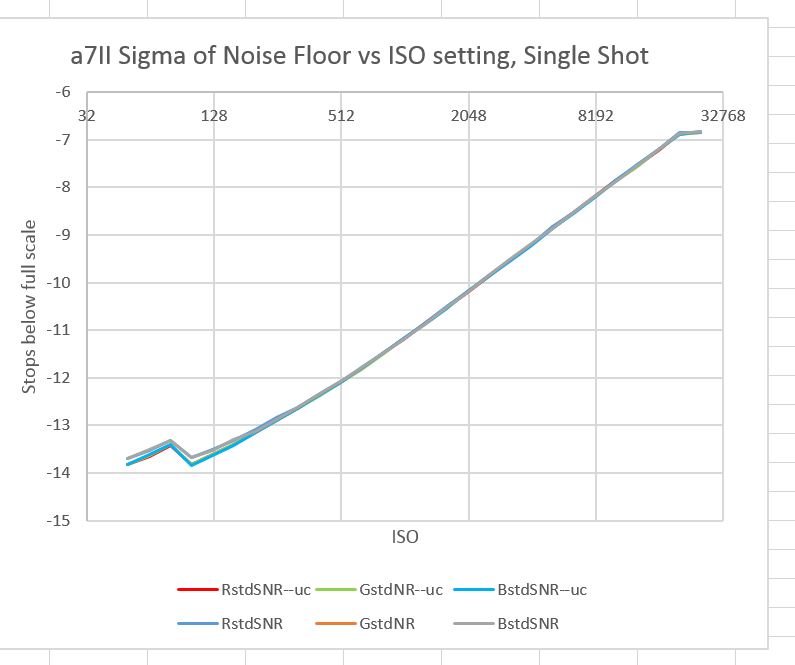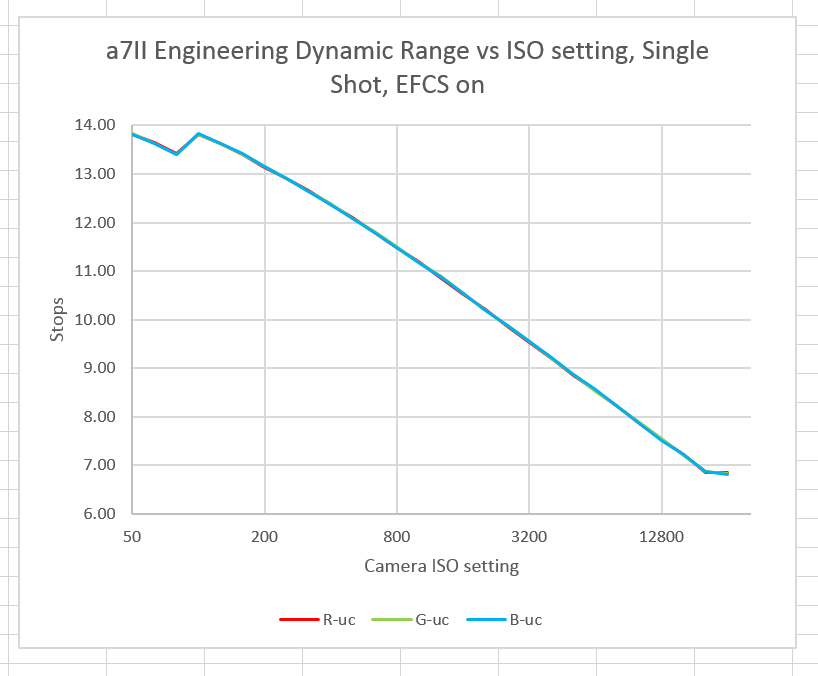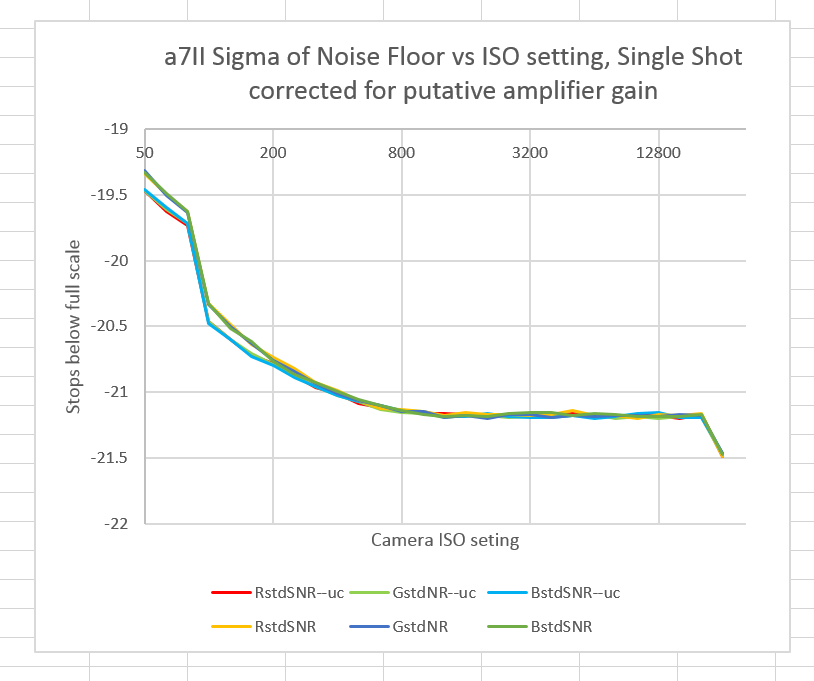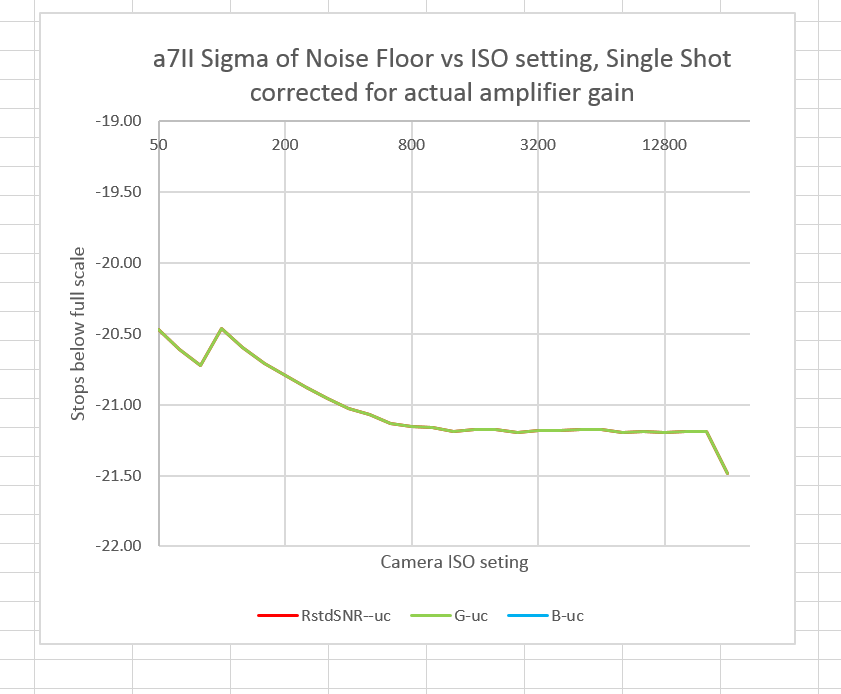Yesterday, I posted some dark-field histograms from the a7II at various ISO settings with the new uncompressed raw mode enabled. Today I’ll show you what the read noise from those images looks like, and how it compares to the CRAW lossily compressed dark field images.
I looked at a 200×200 central square and examined the red and blue raw channels, and one of the green ones. The shutter speed was 1/2000 second. EFCS was on, and IBIS was off.
The lines with the suffix -uc are the uncompressed files. As you can see, there is virtually no difference among the lines. Oddly, there are some slight differences at low ISOs.
For those of you used to looking at dynamic range, not noise, here are the data processed that way:
Compensating for the putative amplifier gain to get the read noise referred to the input of the amplifier:
Ignore the absolute values of the vertical axis.
And , for just the uncompressed data, corrected for the actual amplifier gain:
Note that the a7II is completely ISOless above 800. Also note that the increased EDR at the “fake” ISOs below 100 is not real.
By the way, the point at ISO 25600 looks too good to be true, doesn’t it? It is indeed. Sony gets the noise that low through digital signal processing.
The bottom line? Uncompressed raw doesn’t materially affect read noise or dynamic range on the a7II.




CarVac says
Does the new firmware change the 12-bit output from continuous release mode and bulb exposures? Still only 12 bits?
Jim says
Still only 12 bits.
Joe says
Then what DOES it do? I shot to compare, too – and the only difference I noticed was that yes, some artifacts are gone – but others are introduced in the uncompressed in other areas. No greater, no worse. Surely there must be some point to uncompressed?
Jim says
I have not seen anything that looks like compression artifacts in the uncompressed files. But I haven’t looked very hard. Do you have examples?
Jim
CarVac says
I’ve read that the biggest problem is actually posterization in gentle gradient skies at night, not the edge issues. You get an extra bit of precision, or effectively more than that in the brighter regions since it was tone curved before compression.
It might be no better though in bulb mode.
(This is all hearsay, I don’t have one and haven’t played with any raw files myself that are supposed to suffer from those issues)
Jim says
I’ve read that (about the gradients), too, and have been unable to make it happen, even in simulation. When you look at the way the algorithm works, there should be plenty of photon noise dither to keep it from happening. I’m calling this an urban myth, for now.
Jim
moffatross says
In my experience, badly dithered night sky gradients can’t be seen on-screen in the RAW software (LR or PN), but are often almost impossible to miss after conversion to JPEG, no matter what write settings are used. To my mind, that’s not a RAW issue.